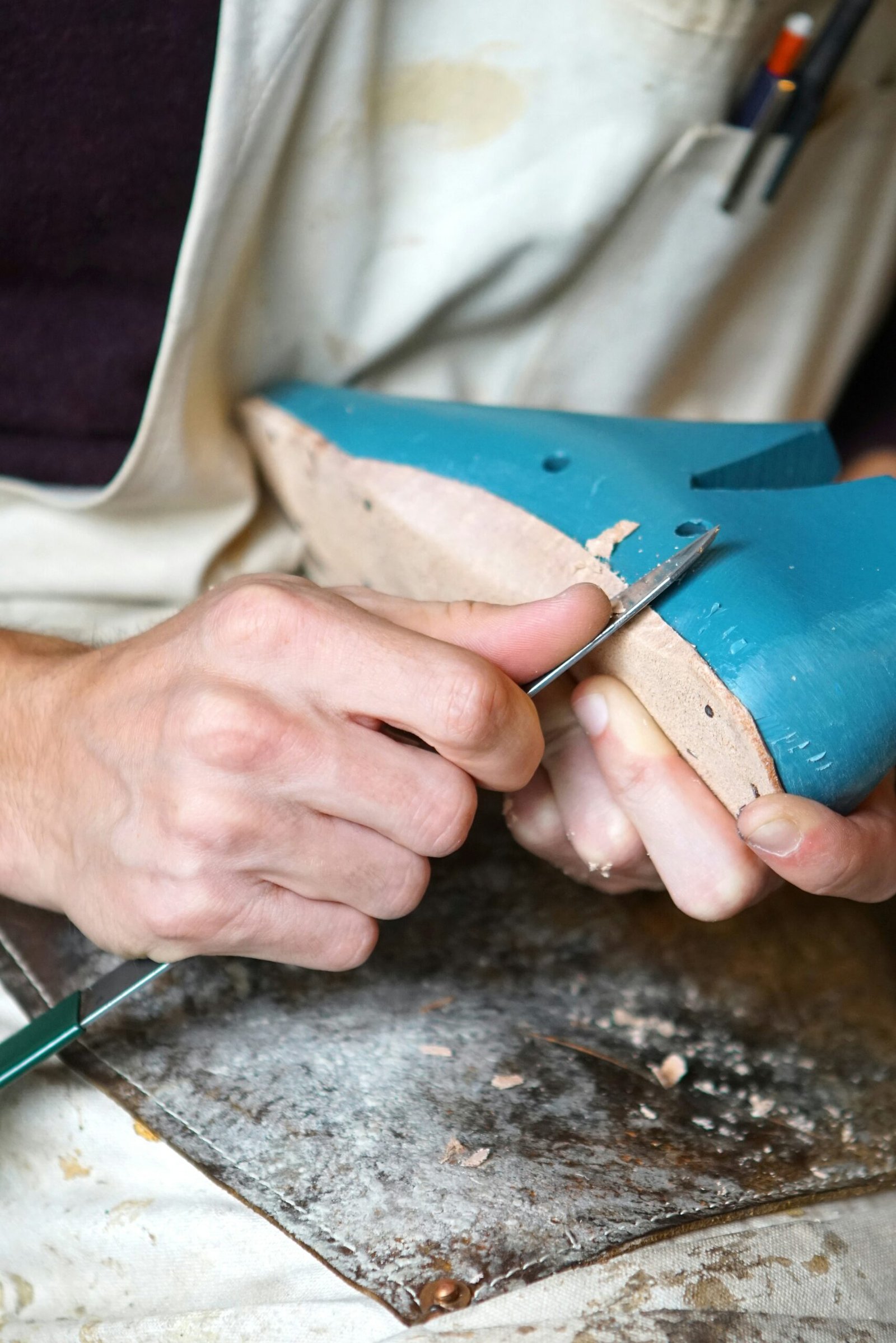
In recent years, the fashion industry has witnessed a significant shift towards personalized customization. This trend has been fueled by the increasing demand for unique and individualized products. Consumers no longer want to be limited to mass-produced items that are available to everyone. They crave something that reflects their own personal style and identity.
One of the ways brands are catering to this demand is through the use of virtual fitting rooms. These virtual platforms allow consumers to try on clothes without actually having to physically be in a store. By simply uploading their measurements and selecting the desired garment, shoppers can get a realistic idea of how the item will look and fit on them. This not only saves time and effort but also reduces the chances of purchasing ill-fitting clothes.
Another aspect of personalized customization in the fashion industry is the option to design one’s own clothing or accessories. Brands are now offering online tools that allow customers to choose fabrics, colors, and styles to create their own unique pieces. This level of customization goes beyond just selecting from a pre-determined range of options; it empowers individuals to express their creativity and design something that truly represents their personal taste.
Furthermore, advancements in technology have made it possible for brands to offer personalized recommendations based on individual preferences. Through the use of artificial intelligence and machine learning algorithms, fashion retailers can analyze a customer’s browsing and purchasing history to suggest items that align with their style and preferences. This not only enhances the shopping experience but also increases customer satisfaction and loyalty.
Moreover, personalized customization has also extended to the realm of sustainability. Many brands now offer the option to upcycle or repurpose old garments into new ones. This not only reduces waste but also allows individuals to create something unique and meaningful out of items they already own.
Overall, personalized customization is revolutionizing the fashion industry. It is empowering consumers to have a greater say in the products they purchase and allowing them to express their individuality. As technology continues to advance, we can expect to see even more innovative ways for consumers to personalize their fashion choices, further blurring the line between fashion and personal style.
Virtual Fitting Rooms: Trying Before Buying
One of the most exciting developments in personalized customization is the concept of virtual fitting rooms. Traditionally, trying on clothes involved going to a physical store and spending time in fitting rooms. However, with virtual fitting rooms, consumers can now try on clothes virtually, right from the comfort of their own homes.
Virtual fitting rooms use augmented reality (AR) technology to superimpose the selected clothing items onto the consumer’s image or avatar. This allows them to see how the clothes would look and fit on their body without actually trying them on. It not only saves time but also provides a more realistic and personalized shopping experience.
Virtual fitting rooms also offer additional features such as size recommendations based on body measurements, style suggestions, and the ability to mix and match different clothing items. These features enable consumers to make more informed decisions and explore different customization options.
Moreover, virtual fitting rooms have revolutionized the way people shop for clothes by eliminating the need to physically visit multiple stores or spend hours trying on different outfits. With just a few clicks, consumers can browse through a wide range of clothing options, select their preferred items, and virtually try them on in real-time.
Another advantage of virtual fitting rooms is that they provide a solution to the common problem of sizing inconsistencies across different brands. By inputting their body measurements, consumers can receive accurate size recommendations for each clothing item, taking the guesswork out of online shopping.
Additionally, virtual fitting rooms offer a unique opportunity for customization. Not only can consumers see how a particular outfit looks on them, but they can also experiment with different styles, colors, and patterns. This allows them to explore their personal fashion preferences and discover new combinations that they may not have considered before.
Furthermore, virtual fitting rooms are not limited to just clothing. They can also be used for trying on accessories such as jewelry, glasses, and hats. This expands the possibilities for personalization and allows consumers to visualize how different accessories would complement their chosen outfit.
In conclusion, virtual fitting rooms have revolutionized the way people shop for clothes by providing a convenient, realistic, and personalized experience. With the advancements in augmented reality technology, consumers can now try on clothes virtually, receive size recommendations, explore different customization options, and even experiment with accessories. As the technology continues to evolve, virtual fitting rooms are expected to become an integral part of the online shopping experience, bridging the gap between the virtual and physical worlds.
Furthermore, tailored designs provide an opportunity for consumers to support local artisans and craftsmen. Many brands collaborate with skilled artisans who handcraft personalized pieces, ensuring that each item is created with attention to detail and quality craftsmanship.
These collaborations not only support local economies but also preserve traditional techniques and craftsmanship that might otherwise be lost in the fast-paced world of mass production. By choosing a tailored design, consumers are not only getting a unique and personalized item but also contributing to the preservation of cultural heritage.
In addition to clothing and accessories, tailored designs are also becoming popular in the world of interior design. Homeowners can now customize furniture, lighting fixtures, and even wallpaper to create a space that reflects their personal style and taste.
For example, a homeowner may choose to customize a sofa by selecting the fabric, color, and pattern that best suits their preferences. They can also add unique details such as custom embroidery or decorative buttons to make the piece truly one-of-a-kind.
Moreover, tailored designs extend beyond physical items. In the digital age, consumers can also customize their online experiences. Websites and apps now offer personalized recommendations based on individual preferences and browsing history.
For instance, an online retailer may suggest products that align with a customer’s previous purchases or browsing patterns. This level of personalization not only enhances the user experience but also increases the likelihood of a successful sale.
In conclusion, tailored designs have revolutionized the way consumers interact with fashion, interior design, and even the digital world. From personalized clothing and accessories to customized furniture and online experiences, consumers now have the power to create unique and meaningful items that reflect their individuality. This trend not only promotes sustainability and supports local artisans but also enhances the overall consumer experience.
With the rise of social media and online platforms, consumer engagement has become more important than ever. Brands are constantly seeking ways to connect with their customers on a deeper level and personalized customization has emerged as a powerful tool in achieving this goal.
When consumers are given the opportunity to customize their clothing, they feel a sense of empowerment and individuality. They are no longer just passive consumers, but active participants in the design process. This involvement creates a unique bond between the brand and the customer, fostering a sense of loyalty and trust.
Moreover, personalized customization allows brands to tap into the growing demand for unique and one-of-a-kind products. In a world where mass production dominates, consumers are increasingly seeking personalized items that reflect their own style and personality. By offering customization options, brands can cater to this desire for exclusivity and differentiate themselves from their competitors.
Additionally, the data collected through personalized customization is invaluable for brands. By analyzing the choices and preferences of consumers, brands can gain deep insights into their target audience. They can identify trends, understand consumer behavior, and make informed business decisions. This data-driven approach not only helps brands stay relevant in a fast-paced market but also enables them to anticipate and adapt to changing consumer needs.
In conclusion, personalized customization is not just a trend, but a powerful tool for building a connection with consumers. It enhances the shopping experience, increases consumer engagement, and provides valuable data for brands. As the demand for personalized products continues to grow, brands that embrace customization will have a competitive edge in the market and a loyal customer base.

